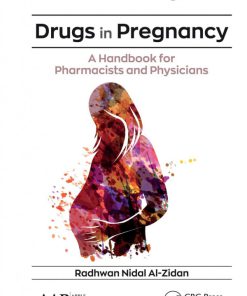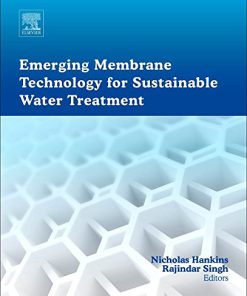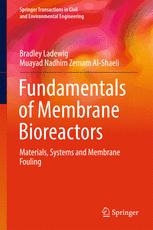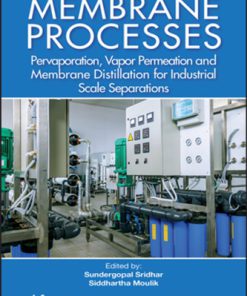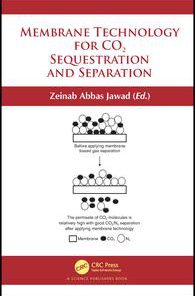Membrane Characterization 1st Edition by Nidal Hilal, Ahmad Fauzi Ismail, Takeshi Matsuura, Darren Oatley Radcliffe ISBN 9780444637918 0444637915
$50.00 Original price was: $50.00.$25.00Current price is: $25.00.
Membrane Characterization 1st Edition by Nidal Hilal, Ahmad Fauzi Ismail, Takeshi Matsuura, Darren Oatley-Radcliffe- Ebook PDF Instant Download/Delivery: 9780444637918, 0444637915
Full download Membrane Characterization 1st Edition after payment
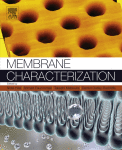
Product details:
ISBN 10: 0444637915
ISBN 13: 9780444637918
Author: Nidal Hilal, Ahmad Fauzi Ismail, Takeshi Matsuura, Darren Oatley-Radcliffe
For the first time, readers will be able to understand the importance of membrane characterization, the techniques required, and the fundamental theory behind them. This book focuses on characterization techniques that are normally used for membranes prepared from polymeric, ceramic, and composite materials.
– Features specific details on many membrane characterization techniques for various membrane materials of industrial and academic interest
– Contains examples of international best practice techniques for the evaluation of several membrane parameters, including pore size, charge, and fouling
– Discusses various membrane models more suitable to a specific application
– Provides examples of ab initio calculations for the design, optimization, and scale-up of processes based on characterization data
Table of contents:
Part 1. Spectroscopy Methods for Membrane Characterization
Chapter 1. Fourier Transform Infrared (FTIR) Spectroscopy
1. Introduction
2. FTIR Principle and Analysis Process
3. Sample Preparation Methods
4. Techniques of Sample Handling
5. Membrane Surface Functionalization Monitoring by FTIR
6. Stability and Durability Monitoring in Various Membrane Application by FTIR
7. Conclusion
Chapter 2. Raman Spectroscopy
1. Introduction
2. Principle of Raman Spectroscopy
3. Raman Spectroscopy for Polymer Characterization
4. Raman Spectroscopy for Polymeric Membrane Characterization
5. Conclusion
List of Abbreviation
Chapter 3. Electron Paramagnetic Resonance (EPR) Spectroscopy
1. Introduction
2. Fundamentals of EPR
3. EPR Applications for the Synthetic Polymeric Membranes
4. Other Examples of EPR Applications
5. Conclusions
Chapter 4. Nuclear Magnetic Resonance (NMR) Spectroscopy
1. Introduction
2. Basics of NMR Spectroscopy
3. Prediction of Molecular Structure, Blend Miscibility, Phase Morphology of the Polymers
4. Determination of Pore Structure and Pore Radius of the Polymeric Membrane
5. Determination of Stability and Degradation of Polymeric Membranes
6. Conclusion
List of Abbreviations
List of Symbols
Chapter 5. X-Ray Photoelectron Spectroscopy (XPS)
1. Introduction
2. Basics of XPS
3. Determination of Atomic Concentration in Polymer Membranes
4. Prediction of Crosslinking and Hydrophilicity of the Polymer Membranes
5. Conclusion
Chapter 6. Small-Angle Scattering Techniques (SAXS/SANS)
1. Introduction
2. Analysis of Small-Angle Scattering Profile
3. Scattering Profile of Cross-Linked Polymer
4. Study of the TFC Membrane
5. Small-Angle Scattering From Dilute Polymer Solution or Colloidal Solution Systems
6. Probing Polymer–Nanoparticle Interaction in Dilute Solution
7. Structure of Polymer Nanocomposite Membrane
8. Understanding Form and Structure Factor in Rubbery Polydimethylsiloxane Membrane
9. Conclusions
Part 2. Microscopy Methods for Membrane Characterization
Chapter 7. Atomic Force Microscopy (AFM)
1. Introduction
2. AFM Imaging Modes
3. Interaction Force Measurements
4. Membrane Surface Imaging and Characterization
5. Fouling Characterization of Filtration Membranes Using AFM
6. Concluding Remarks
Chapter 8. Transmission Electron Microscopy (TEM)
1. Introduction
2. Basics of TEM
3. Bright-Field and Dark-Field Images
4. Specimen Preparation
5. Characterization of Membrane Building Block
6. Membrane Characterization
7. Conclusion
List of Abbreviations
List of Symbols
Chapter 9. Scanning Electron Microscopy (SEM) and Energy-Dispersive X-Ray (EDX) Spectroscopy
1. Introduction
2. Fundamentals of Electron Microscopy
3. Applications in Membrane Characterization
4. Conclusion
Part 3. Physical and Chemical Characterization Methods for Membrane Characterization
Chapter 10. Pore Size Measurements and Distribution for Ceramic Membranes
1. Introduction
2. Typical Method for Pore Size Measurements and Distribution
3. Comparisons Between Measurements
4. Conclusion
Notation
Greek Letters
Subscripts
Chapter 11. The Bubble Gas Transport Method
1. Introduction
2. Principle of Bubble Gas Transport Method
3. Experimental Setup and Procedure
4. Critical Aspects of Bubble Gas Transport Method
5. Conclusion
Abbreviations and Symbols
Chapter 12. Contact Angle Measurements
1. Introduction
2. Theoretical Background
3. Method of Contact Angle Measurement
4. Factors Affecting Contact Angle Measurements
5. Hydrophilicity/Hydrophobicity Analysis
6. The Membrane Characterization by Contact Angle
7. Conclusion
List of Symbols
Part 4. Mechanical Properties Characterization of Membranes
Chapter 13. Mechanical Characterization of Membranes
1. Introduction
2. Mechanical Characterization Techniques
3. Mechanical Degradation of Polymeric Membranes
4. Stress-State of Polymeric Membrane Under Actual Condition
5. Advanced Techniques for Mechanical Properties Testing
6. Conclusions
List of Abbreviations
Part 5. Mass Transport, Modeling and Feed Solution Characterization
Chapter 14. Gas and Vapor Transport in Membranes
1. Introduction
2. Gas and Vapor Transport in Membranes
3. Application
4. Conclusion
List of Abbreviations
List of Symbols
Chapter 15. Mass Transport in Porous Liquid Phase Membranes
1. Introduction
2. Mass Transfer From the Bulk Feed to the Membrane Surface
3. Separation of Solutes at the Membrane Surface
4. Transport of Solutes Through the Membrane
5. Solute Transfer From the Membrane Interface to the Bulk Permeate
6. Liquid Phase Membrane Applications
7. Conclusions
Chapter 16. The Use of Modeling for Characterization of Membranes
1. Introduction
2. Background Information
3. Simple Models for Basic Membrane Characterization
4. Advanced Models for Structural and Electrical Properties Characterization
5. Conclusions
Chapter 17. Feed Solution Characterization
1. Introduction
2. Particle Size and Shape
3. Methods of Particle Size Measurement
4. Particle Charge and Zeta Potential
5. Viscosity
6. Conclusions
Chapter 18. Electrokinetic Phenomena for Membrane Charge
1. Introduction
2. Electrophoresis
3. Electro-Osmosis
4. Sedimentation Potential
5. Streaming Potential
6. Conclusions
People also search for:
sem membrane characterization
porosimetric membrane characterization techniques a review
ion exchange membrane characterization
membrane characterization techniques
membrane characterization pdf
Tags: Nidal Hilal, Ahmad Fauzi Ismail, Takeshi Matsuura, Darren Oatley Radcliffe, Membrane Characterization
You may also like…
Religion & Spirituality - Islam
Engineering
Biology and other natural sciences
Science (General)
Engineering





